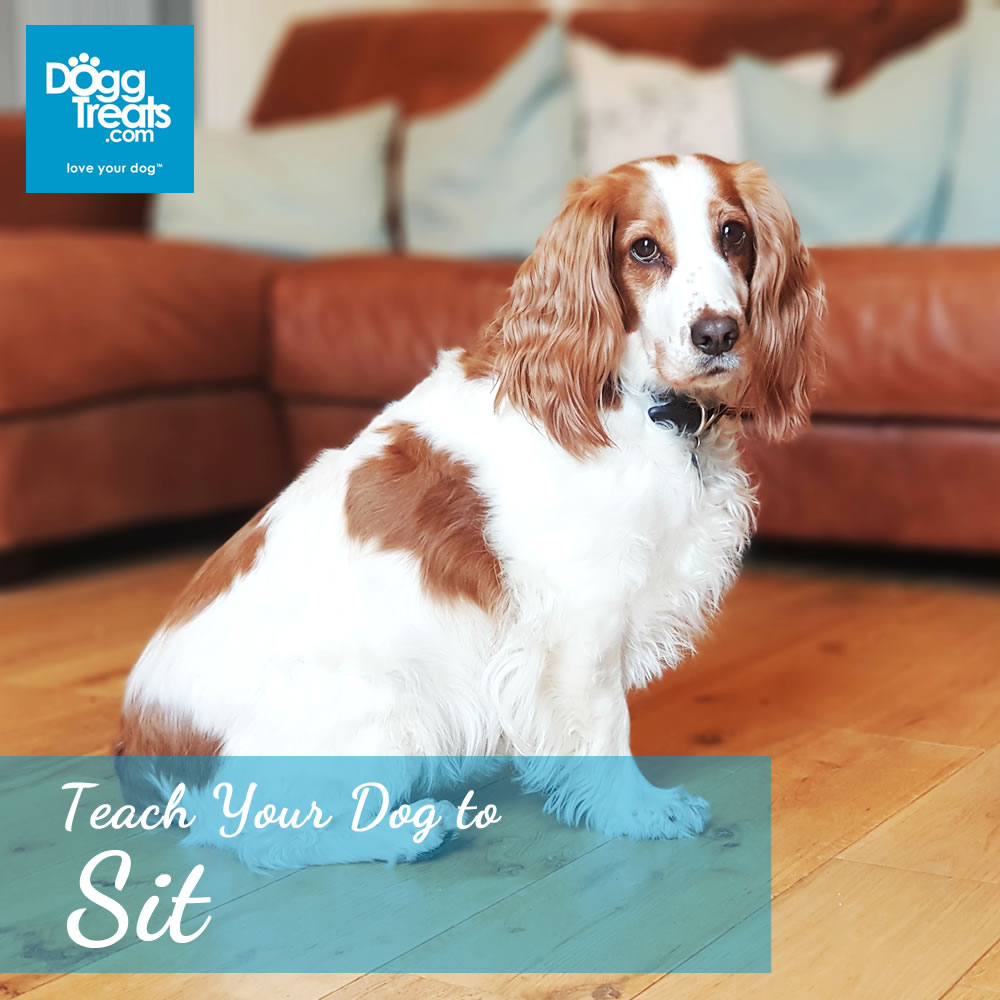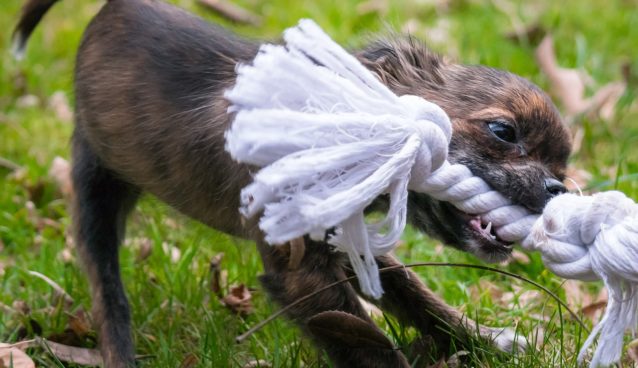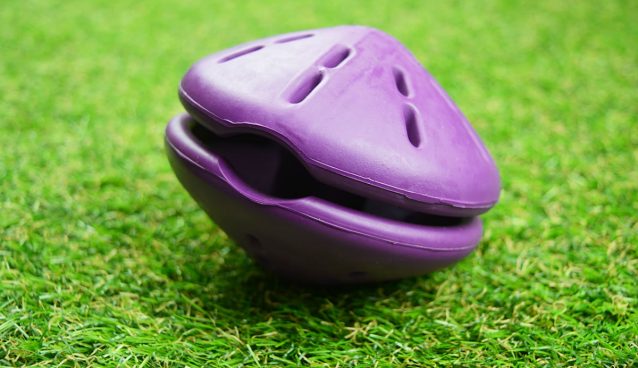Teach your Dog to Sit Every Time – in 10 Easy Steps
Teaching your dog to sit is probably the most basic command you can teach your dog. It is also one of the most important. Teaching your dog to sit helps you move on easily to other commands such as “stay” and “lie down”. It also helps with obedience (after all, your dog can’t be causing too much trouble whilst just sat there, right!) and helps with focus.
In this tutorial, you will learn the correct way to teach your dog to sit. (Because, yes, there are incorrect ways!)

Teach Your Dog to Sit in 10 Easy Steps
How do I Teach my Dog to Sit – What’s Involved?
Difficulty: 1/5 Very easy
Time: 5-10 minutes
Number of training sessions needed to master: Several times a day over a couple of days.
As always, regular training is needed to help re-enforce good behaviour.
Tools Needed: Yummy dog treats (and a clicker if you use one)
Introduction
Teaching your dog to sit it usually very easy, but is easiest when your dog is slightly tired. Not too tired (click here for some basics on training), but also not full of beans, or your dog just won’t want to sit!
To start off, have a pouch full of healthy training treats, and make sure your dog knows you have them to get their attention. If needed, give them one “free” treat to get their attention.
If you use clicker training with your dog, have this ready too. If not, pick a word to use as a marker to let your dog has done the correct behaviour, such as “good!”.
Tips before we start
- Make sure your dog does not “cheat”. Dogs are great at cheating and learning how to get a treat with less work. Dogs do actually “cheat-sit” (lowering their bum without it touching the ground). Don’t reward this.
- Never reward bad behaviour, such as jumping up. Ignore it.
- Go back a step if your dog isn’t quite getting the idea. Repeat more time than stated if needed.
- Keep training sessions short, under 10 minutes. You want your do to love training, not get board.
- End training on a success.
- Never get mad. Remember training is fun! Stop before the fun stops.
- Click here for our full training guide (its free!)
How to Teach Your Dog to Sit – 10 Steps:
- Get your dog’s attention so they know you have a treat.
- Hold the treat up in front of your dog’s nose, just above head height. Don’t hold the treat too high or she will be tempted to jump. Keep the treat between your forefinger and thumb, palm up.
- If your dog is already sat before step 2, take a step back so your dog follows. You need your dog to be stood first.
- Move the treat towards your dog, and slowly over towards the back of their head. Your dog should naturally want to follow the treat with her eyes/nose, and will end up sitting down to do this. Don’t move the treat back so fast so she spins round to get at the treat. It should be controlled.
- As soon as your dog’s bum touches the ground (you should do this immediately), click or use your marker word. Say this in an upbeat, enthusiast tone.
- Give your dog the treat and follow by lots of praise and attention. Your dog will be eager to learn what she did to get such amazing praise!
- Repeat this around 5 times until your dog sits every time.
- Give yourself a pat on the back, but you’re not done yet! Your dog is currently following the treat, but should also sit without following a treat. Get a treat in both hands ready, and repeat steps 2 to 7. Do everything exactly the same, but this time, every time your dog sits, give them the treat from your other hand. Repeat around 5 times.
- Next, we will repeat the process, but the time without the treat in your original hand, and only in your second hand. Repeat steps 2 to 7 around 5 times, moving your original hand in the same way you did at the beginning. This is now setting your dog up to watch this hand as a visual cue to sit. Teaching your dog a visual and audio cue is always sensible (great in loud environments, when your dog gets older, etc).
- Now, finally, comes the sit command. Again, repeat steps 2 to 7, this time saying the command “sit”. Try and phase out the visual cue here, to make sure your dog understands the verbal command, not just the visual. Repeat this several time.
Other Great Treating Tips
- If your dog is having trouble with “sit”, you can ‘mark’ the behaviour with a clicker. Your dog will sit on their own regularly. So observe him until he sits, then immediately click, say “sit” and treat. (Click here for more information on dog clicker marking).
- Once your dog will sit on command, keep up the training over the next few days, and then keep training on regular occasions after that.
- Refresh the training by using the verbal command, the visual command, and the verbal and visual together.
- After your dog knows the command well, train your dog in various locations, such as in the garden, in the park, etc. Start off with places with less distractions, and work up to more distracting locations. This is called proofing.
- Its good to stop and tell your dog (on the lead of course) to sit before crossing the road. Treat your dog until he sits on his own when stopped at the curb.
- Next, use the sit command to teach your dog to not jump up, and teach your dog to stay.
How to deal with your dog not sitting
In the first stages of training, your dog can forget what certain commands mean. If this is happening, go back a step or two until your dog starts sitting. Be patient.
If your dog definitely knows what sit means, but isn’t doing this on command every time, it is important not to let them get away with ignoring you.
If your dog is simply ignoring you, follow these steps (these tips are handy if you are out, at the side of a road, etc):
- Give your dog the “sit” command. (Here we will assume he is being stubborn and ignores you!)
- Give your dog the “sit” command again, whilst at the same time, gently push down on there back end, so they have to sit.
- Praise your dog, and treat them if possible.
But why treat when your dog has ignored you? You wouldn’t usually treat a dog for not doing something. However, this is why we gently make your dog sit, as this means your dog has actually sat, and he will learn that he cant ignore you, and more than that, it reminds him good things happen (praise or treats) when he listens. (Note: Pushing your dog into a sit position will not effectively work when initially training your dog. This only works in this situation because your dog already knows what “sit” means.)
Your dog will learn it’s easier to just listen. But also, it’s important to re-train with fun rewarding training, so your dog wants to listen! So… - When you get home, do some “sit” training with your dog with some training treats.









